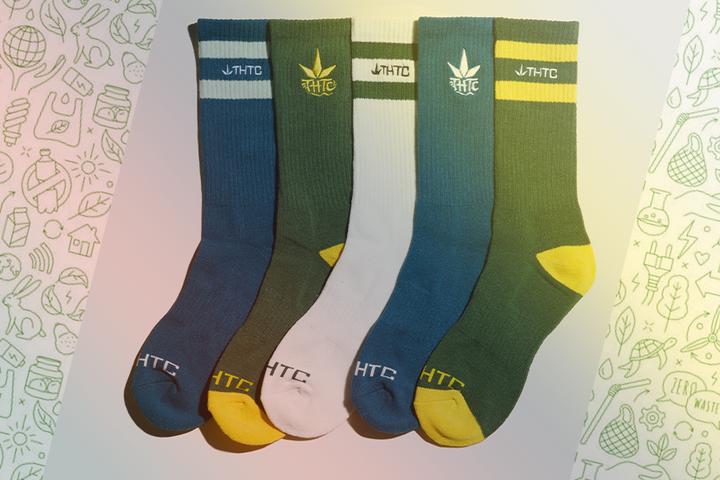Sustainable fashion is no longer a niche market term for high-end consumers or us environmentally-conscious few. Over the past decade or so, sustainable fashion has become decidedly mainstream, with major brands and retailers investing in eco-friendly materials and production methods.
What was once Kool Keith is now Kanye. Elliot Smith is now Ed Sheeran. Fast fashion is out. Slow fashion is in. Sustainable brands, like yours truly, are the nun’s tits. Cheap, fast fashion brands are in the pits.
Or polluting the landfills, to be specific.
Let’s discuss the reasons behind this shift and examine the evidence proving sustainable fashion is now a mainstream trend.
What Is Sustainable Fashion?
Sustainable fashion is clothing produced with environmentally-friendly materials and processes. It considers the social impact of production, including workers' rights and fair labour practices, as a timely response to the fashion industry's historically harmful impact on the environment and workers' rights. It cleans up the supply chain, ensuring everything in the ecosystem, from the types of textiles sourced, to the working conditions of those making the clothes - monitoring the entire life cycle of a garment to ensure production is not done at cost to the Earth.
For a long time, the practices of most of the mainstream fashion companies were essentially anything but sustainable and were known for their high carbon footprint and water usage. Traditional cotton production, for example, uses large amounts of water and pesticides, which negatively impact the environment and the workers' health. Over recent years, the clothing industry has had to re-examine its practices to create a working environment free from such harmful practices.
Not because they wanted to, mind, but because their whole business model had to react to a more conscious generation.

Not Just A Trend For The Younger Generation
According to a study by Nielsen, 73% of millennials are willing to pay more for sustainable products. This trend is reflected in the industry, where more brands offer sustainable options. However, it's not just millennials who are willing to pay more for sustainable products. Another study by McKinsey & Company found that 66% of consumers worldwide are willing to pay more for sustainable products. This shift in consumer attitudes has led to a shift in the industry's priorities, with brands and retailers investing in sustainable production methods and materials.
It’s we who tell a fashion retailer how we’d like our clothes made, not the other way around.
One of the more significant ways high-street brands incorporate sustainable fashion is by using eco-friendly materials.
Zara launched its Join Life collection, which promotes the recycling of unwanted clothes and uses sustainable materials such as organic cotton and recycled polyester. High street brands are using sustainable production methods, too. This includes reducing water usage, using renewable energy, and reducing waste. Levi's, for example, has introduced Water<Less technology, which reduces water usage during production. ASOS launched its Fashion With Integrity program over a decade ago, focusing on sustainable production methods. Big brands are clearly listening, but there’s still much work to do.
The future of fashion is anything but clear.
Sustainable Fashion In The Luxury Fashion Industry
Sustainable fashion is not just limited to high-street fashion brands - it's also gaining traction in the luxury fashion market. Gucci, for example, launched its Gucci Equilibrium sustainability platform in 2019, which includes sustainable materials and production methods. Luxury fashion brand Stella McCartney, the nepo baby queen, has been a pioneer in sustainable fashion since 2001, using recycled polyester and organic cotton in her collections, avoiding synthetic materials like her dad avoids trying to play Hey Jude at every gig.
The Global Sustainable Fashion Market Is Growing
Sustainable clothing is gaining traction globally, too. A 2020 report by Global Data found that the sustainable fashion market is expected to grow by 9.81% globally between 2020 and 2025. The report also found that consumers in Asia-Pacific are particularly interested in sustainable fashion, with China and Japan leading the trend.
The High Cost Of Sustainable Fashion
While sustainable fashion is gaining in popularity, there are still challenges to overcome. The cost of sustainable materials and production methods can be higher than traditional methods, leading to higher consumer prices. However, as the demand for sustainable fashion grows, the cost will likely decrease as more brands invest in sustainable production methods and materials.
One of the barriers to sustainable fashion has been the high cost of eco-friendly materials and production methods. However, the price is decreasing as more high-street brands invest in sustainability. This makes sustainable fashion more accessible to a wider range of consumers. According to a report by Edited, a retail analytics company, the average price of sustainable clothing has decreased by 9% since 2019.
The Rise Of Second-Hand Clothing Markets
In addition to the demand for sustainable clothing, there’s also a growing interest in second-hand clothing. A report by ThredUp, a second-hand fashion marketplace, the second-hand clothing market is expected to nearly double by 2027. This trend reflects a desire for a long-term commitment to sustainable fashion and an onus to reduce waste and extend clothing life.
The Environmental Impact
The fashion industry is responsible for a significant amount of waste and pollution. According to worldcleanupday.org, the fashion industry produces a staggering 92 million tons of waste yearly. This waste includes unsold clothing, fabric scraps, and leftover materials. In addition to waste, the fashion industry is also responsible for high water usage levels, polluting with dyes and carbon emissions. As the sustainable fashion market becomes the norm, environmental damage has great potential to decrease year after year, and companies are at last showing a kind of commitment to real change rather than paying mere lip service.

So, Now What?
Knowing where your t-shirt comes from should be as important as how it looks on you.
Sustainable apparel made with sustainable fabrics is what’s mainstream, and that isn’t going away.
High-street brands are starting to incorporate sustainable fashion into their collections, using eco-friendly materials and production methods. Consumers are demanding sustainable fashion, and high-street brands are investing in sustainable fashion as a response. This shift is a positive step towards reducing the fashion industry's negative impact on the environment and workers' rights.
As sustainable fashion continues to grow, we should expect to see a huge change with high-street brands incorporating eco-friendly materials and production methods into their collections. The sooner, the better.


